Sea skaters – oh so fast..
 Feb 22, 2015 • 12:09 PM UTC
Feb 22, 2015 • 12:09 PM UTC Panama
Panama 140x Magnification
140x Magnification Microorganisms
Microorganisms
Manu Prakash
I am a faculty at Stanford and run the Prakash Lab at Department of Bioengineering at Stanford University. Foldscope community is at the heart of our Frugal Science movement - and I can not tell you how proud I am of this community and grassroots movement. Find our work here: http://prakashlab.stanford.edu
266posts
1192comments
42locations
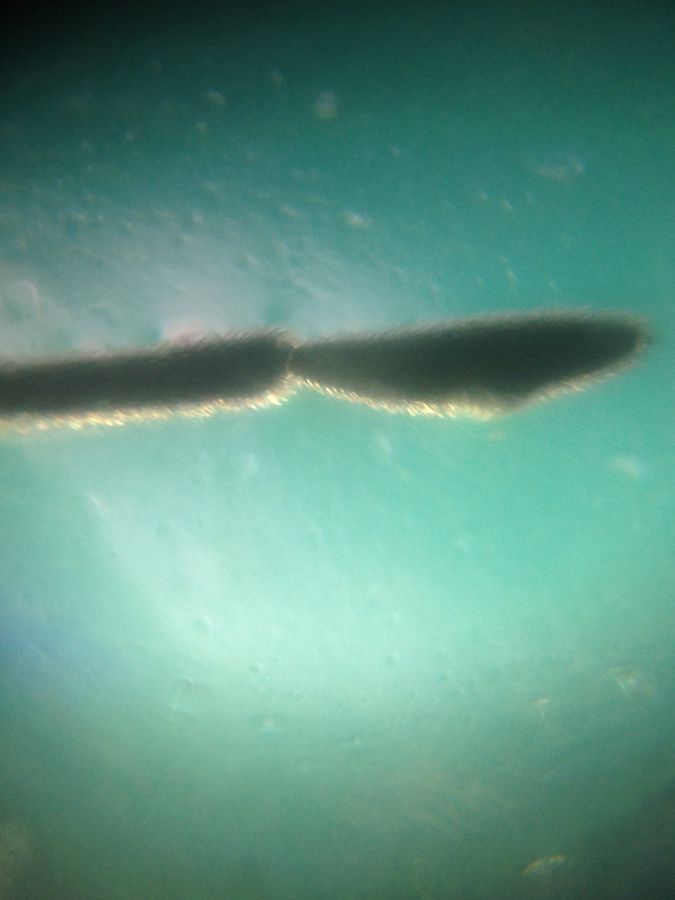
One of the most magical things to watch out for while strolling around in country side, is the surface of a pond. Teaming with life literally in the edge of an ecosystem. I spent a fair amount of time trying to understand the physics of life on the interface. And I thought – I have it all figured out.
On my recent trip to Panama; I was kayaking close to mangrove islands and I saw a giant raft of black dots moving on the open ocean surface. I was intrigued and paddled straight to the raft. I always carry ziplock bags with me – and was able to scoop a few of these “sea skaters”. See the video below, it was dark and I only had a headlamp – but you can see them dancing on the surface of water.
On my recent trip to Panama; I was kayaking close to mangrove islands and I saw a giant raft of black dots moving on the open ocean surface. I was intrigued and paddled straight to the raft. I always carry ziplock bags with me – and was able to scoop a few of these “sea skaters”. See the video below, it was dark and I only had a headlamp – but you can see them dancing on the surface of water.
These are probably Halobates. They have a short body and long legs. I had heard of them, but the speed puts anything I could have imagined out of the ballpark estimates I would have guessed.
So you ask, what’s so magical about these little tiny dots. I want to remind you, these things are skating along on the surface is water. Try doing that yourself, and you realize that you will sink. So you ask again; ok ok – I have heard of that. Something called “surface tension” which supports the weight. What’s the big deal? Aha.. Now I have you exactly where I wanted. So to truly be above the surface of water, these creatures have to be “super hydrophobic” by producing a coating that almost repels water 100%. So if you put a drop of water on them, it will bead up like a ball. Pretty much, the surface hates water. Isn’t it ironic that they live on water but the surface hates water. That’s the point, since they are super hydrophobic; how do they generate traction forces on the surface of water to an extent that they can move this fast. Fascinating right? This is a paradox I spent a lot of time thinking about – and we invented a way out of the paradox by describing what we call “anisotropic super hydrophobic surfaces”. You can read more about that here:
http://stanford.edu/~manup/docs/Prakash_NonlinearMechanics_2011.pdf
Back to Halobates. I wanted to see what the surface of the leg looks like (hint: it’s very hairy). Remember my last post about sea otters (
http://microcosmos.foldscope.com/2015/02/20/1-million-hair-per-square-inch-worlds-furriest-animal/)
Here are a few pictures I took of the legs at different point. You can clearly see the pointy hairy legs. Very high density to make sure water never penetrates inside. Also; to my surprise – I could not see a tarsi at all. That’s interesting because I thought the claw like end at the tip of the leg would help in hunting. But they don’t seem to have a substantial tarsi. This also points towards a solely “sea” going life style as compared to water strikers which do come out of the water from time to time (to dry out – isn’t that ironic).
Enjoy the pictures.
Cheers
Manu
So you ask, what’s so magical about these little tiny dots. I want to remind you, these things are skating along on the surface is water. Try doing that yourself, and you realize that you will sink. So you ask again; ok ok – I have heard of that. Something called “surface tension” which supports the weight. What’s the big deal? Aha.. Now I have you exactly where I wanted. So to truly be above the surface of water, these creatures have to be “super hydrophobic” by producing a coating that almost repels water 100%. So if you put a drop of water on them, it will bead up like a ball. Pretty much, the surface hates water. Isn’t it ironic that they live on water but the surface hates water. That’s the point, since they are super hydrophobic; how do they generate traction forces on the surface of water to an extent that they can move this fast. Fascinating right? This is a paradox I spent a lot of time thinking about – and we invented a way out of the paradox by describing what we call “anisotropic super hydrophobic surfaces”. You can read more about that here:
http://stanford.edu/~manup/docs/Prakash_NonlinearMechanics_2011.pdf
Back to Halobates. I wanted to see what the surface of the leg looks like (hint: it’s very hairy). Remember my last post about sea otters (
http://microcosmos.foldscope.com/2015/02/20/1-million-hair-per-square-inch-worlds-furriest-animal/)
Here are a few pictures I took of the legs at different point. You can clearly see the pointy hairy legs. Very high density to make sure water never penetrates inside. Also; to my surprise – I could not see a tarsi at all. That’s interesting because I thought the claw like end at the tip of the leg would help in hunting. But they don’t seem to have a substantial tarsi. This also points towards a solely “sea” going life style as compared to water strikers which do come out of the water from time to time (to dry out – isn’t that ironic).
Enjoy the pictures.
Cheers
Manu
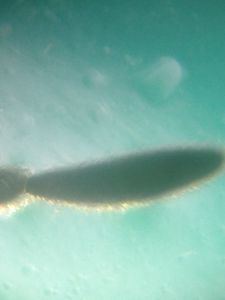
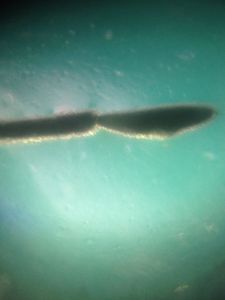
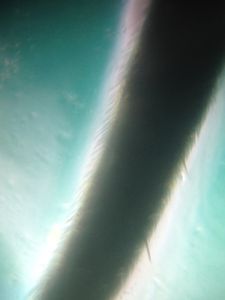
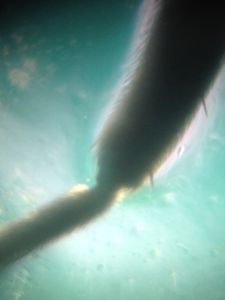
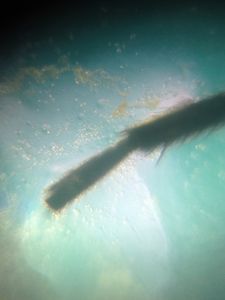
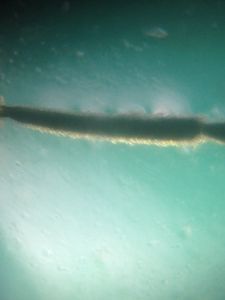
Sign in to commentNobody has commented yet... Share your thoughts with the author and start the discussion!

 0 Applause
0 Applause 0 Comments
0 Comments
















